Q
What is the fuel consumption of Honda City 2018?
The fuel economy of the 2018 Honda City varies by powertrain. The version with the 1.5-liter i-VTEC naturally aspirated engine averages around 5.4 to 5.8 liters per 100 kilometers in combined driving, while the RS trim with the 1.5-liter Earth Dreams turbocharged engine is slightly higher at approximately 6.2 liters per 100 kilometers. Actual figures can fluctuate based on driving habits, road conditions, and maintenance status. Equipped with a CVT transmission that optimizes fuel efficiency, paired with an ECO mode for further savings, this car suits city commuting well. To boost fuel economy, regular maintenance like air filter replacements and using the recommended viscosity oil is advisable, along with avoiding aggressive acceleration or speeding. In its class, fuel efficiency ties closely to engine technology and lightweight design—some competitors achieve lower consumption through direct injection or hybrid systems, yet the Honda City remains popular for its reliability and strong after-sales network. Additionally, keeping tire pressure at the manufacturer's recommended levels and reducing idle warm-up time are small details that can marginally improve fuel economy.
Special Disclaimer: This content is published by users and does not represent the views or position of PCauto.
Related Q&A
Q
Does the Honda City 2018 have airbags?
The 2018 Honda City does come with airbags, but the exact setup varies by trim level. Higher-spec models usually get 6 airbags – that's dual front, side, and side curtain airbags. The base version, though, might only have the dual front ones. Definitely check the specific trim's spec sheet before buying. Airbags are a key part of the passive safety system; they work with seatbelts during a crash to really cut down on injury risks. But remember, they only do their best job when you're properly buckled up, and never put a child seat in the front where there's an active airbag. The car also standardizes basics like ABS and EBD, and some versions might throw in VSA vehicle stability control – those help with handling in emergencies. Oh, and it's smart to keep an eye on the airbag system warning light day-to-day. If it lights up, get it checked out ASAP to make sure everything's working right.
Q
What is the fuel capacity of Honda City 2018?
The 2018 Honda City comes with a 40-liter fuel tank, a design that balances daily commuting and short to medium-distance travel needs. Paired with its efficient 1.5-liter i-VTEC petrol engine or 1.5-liter Earth Dreams diesel engine (in select markets), it delivers an approximate range of 500 to 600 kilometers, though actual performance varies based on driving habits and road conditions. Notably, all City models come standard with an ECO assist system, which further boosts fuel efficiency by optimizing throttle response and air conditioning output. The resin fuel tank not only reduces vehicle weight but also effectively lowers corrosion risks. For frequent long-distance drivers, regular tire pressure checks and air filter maintenance are recommended – these small details can lead to even better fuel economy. Competitors like the Toyota Vios offer a 42-liter tank, but real-world range depends on overall engine efficiency, and the City has always been competitive when it comes to fuel-saving technologies.
Q
Is the 2018 Honda City fuel efficient?
The 2018 Honda City does a solid job when it comes to fuel economy. Under the hood, you've got that 1.5-liter i-VTEC engine paired with a CVT transmission. Official figures peg the combined fuel consumption at around 5.4 liters per 100 kilometers. In real-world driving, if the roads are smooth and you keep a steady hand on the wheel, you can usually keep the mixed city-highway fuel use down to about 6 liters per 100 km. That makes it a pretty fuel-efficient pick for daily commutes or longer drives. A big part of that efficiency comes from Honda's Earth Dreams Technology, which boosts fuel economy by optimizing combustion efficiency and cutting down on mechanical resistance. If you're really looking to stretch a tank, there's always Eco mode—it tweaks the throttle response and air conditioning output to save even more fuel. Among its peers, its fuel economy sits comfortably in the upper-middle range, making it a great fit for shoppers who value practicality and cost-effectiveness. Oh, and don't forget—sticking to regular maintenance like changing the air filter and using the right viscosity oil will help keep that fuel economy in check, too.
Q
Does the 2018 Honda City have parking sensors?
The 2018 Honda City does come with parking sensors in some trim levels, but whether a specific model has them depends entirely on its actual specs and configuration grade. Higher-end variants typically feature front and rear parking sensors to help drivers park more safely and conveniently. These sensors use ultrasonic technology to detect distances to obstacles, alerting drivers with audio or visual cues—super handy in crowded city areas or tight parking spots. Beyond parking sensors, many modern cars also offer reverse cameras or even 360-degree surround-view systems, which take parking safety up another notch. If you're looking at a used model or considering upgrading features, it's best to check the vehicle in person or consult a dealer to confirm what's included. You might also want to ask about other driver-assist tech like automatic parking or blind-spot monitoring, as availability can vary between model years and trims.
Q
How many airbags are in a Honda City 2018?
The 2018 Honda City comes standard with six airbags in the local market, including dual front airbags, side airbags, and side curtain airbags. This setup offers comprehensive crash protection for occupants and stands as a higher-tier configuration among its peers. As a key part of the passive safety system, airbags inflate rapidly during a collision to cushion impact forces. However, it's crucial to note that their effectiveness is maximized when used in conjunction with seatbelts—always remember to buckle up during daily drives.
Airbag counts may vary across different model years or trim levels of the Honda City. For instance, some entry-level variants might have fewer airbags to keep the price down. It's advisable to check the exact specifications through the official manual or your dealer before making a purchase.
In recent years, many automakers have been enhancing both active and passive safety features, such as adding knee airbags or rear side airbags. That said, the number of airbags isn't the sole measure of a vehicle's safety. Factors like body structure and electronic stability systems are equally important, so consumers should consider their own needs comprehensively.
Q
What is the mileage of Honda City automatic 2018?
The actual fuel consumption of the 2018 Honda City automatic models varies depending on driving conditions and vehicle condition. Official figures show a combined fuel economy of approximately 5.4 to 5.8 liters per 100 kilometers. It's powered by a 1.5-liter i-VTEC engine paired with a CVT transmission, a powertrain that delivers decent fuel efficiency both in the city and on the highway. In daily driving, by maintaining good driving habits—like avoiding sudden acceleration and hard braking, keeping up with regular maintenance, using the right engine oil, and ensuring proper tire pressure—you can get fuel economy closer to or even better than the official numbers. As a popular compact sedan, the Honda City's fuel efficiency has always been one of its selling points, along with its spacious interior and reliability, making it a great choice for family daily use. If you're looking for even better fuel economy, the latest hybrid versions are worth considering, but the 2018 pure gasoline model is still a great value-for-money option, especially well-maintained ones in the used car market.
Q
Does the Honda City 2018 have ABS?
The 2018 Honda City does come standard with Anti-lock Braking System (ABS), a key part of its active safety features. It effectively prevents wheel lock-up, letting drivers maintain steering control during emergency stops, which is especially handy on slippery roads. Beyond ABS, this model typically includes Electronic Brakeforce Distribution (EBD) and Brake Assist (BA) systems too. Working together, these three significantly boost braking stability. It's worth noting that specs can vary by region, but locally sold versions generally meet ASEAN safety standards. For owners, regularly checking brake fluid condition and pad thickness is crucial to keeping the ABS system effective. If the ABS warning light pops up on the dashboard, it's best to head to an authorized service center for diagnosis as soon as possible. In this class, such safety features have become mainstream, and when shopping for a used car, buyers can check the vehicle's VIN plate or use diagnostic tools to confirm the exact specs.
Q
What type of transmission is in the Honda City 2018?
The 2018 Honda City comes with two transmission options: a 5-speed manual (5MT) and a CVT. The CVT variant features Honda's Earth Dreams technology, which optimizes power transfer and shift logic to balance smoothness and fuel efficiency—perfect for city driving. What makes the CVT stand out is its lack of fixed gears; it seamlessly adjusts ratios based on driving conditions, keeping the engine in its optimal rpm range. This not only delivers better fuel economy than traditional automatics but also eliminates shift jerks. For drivers who prefer more control, the manual transmission offers direct power delivery and a more engaging driving experience. It's worth noting that the CVT requires regular changes of its specific transmission fluid for maintenance, while the manual needs attention to clutch disc wear. Both transmissions are widely used across Honda's lineup, boasting high technical maturity and reliable long-term performance. The choice ultimately comes down to your personal driving style and needs.
Q
What size engine is in the Honda City 2018?
The 2018 Honda City comes with a 1.5-liter four-cylinder naturally aspirated engine, codenamed L15A. This engine features Honda's i-VTEC technology, which delivers solid power while keeping fuel economy in check. It puts out 120 horsepower and 145 Nm of peak torque, paired with either a CVT automatic or a 5-speed manual gearbox. The overall performance is smooth, making it well-suited for city driving. This engine offers plenty of low-end torque, perfect for daily commuting, and still maintains decent power response at higher revs, balancing fuel efficiency with driving fun. It's worth highlighting that Honda's i-VTEC technology optimizes engine efficiency across different driving conditions by intelligently adjusting valve timing and lift—that's a real standout feature here. If you're craving more power, keep an eye out for the hybrid versions in later models; they take fuel economy to an even better level. All in all, the 2018 Honda City's engine setup is right up there with the mainstream in its class, ideal for shoppers who prioritize practicality and reliability.
Q
Does the Honda City 2018 have a sunroof?
Depending on the trim level, the 2018 Honda City does come with a power sunroof on some higher-spec variants, but it's not standard across the entire range. You'll need to check the specific Variant grade for that. As a popular sedan, the sunroof in the City does a nice job of letting in more light and improving ventilation, though it's worth noting that the sunroof version cuts into headroom a bit. Also, over time, you've got to keep the rails clean to avoid annoying squeaks or rattles. In this segment, sunroofs are usually reserved for top trims, so when buying, it's smart to compare the spec sheets of different versions. Beyond the sunroof, pay attention to practical safety features like VSA and the number of airbags. If you're looking at a used City, you can check the condition of the sunroof by inspecting the roof seal strips and how smoothly the switch operates. Regularly lubricating the tracks and cleaning the drain holes will help extend its lifespan.
Latest Q&A
Q
How much is insurance for a BMW M5 2025?
The insurance cost for the 2025 BMW M5 varies depending on individual circumstances and insurance company policies, typically ranging from RM15,000 to RM30,000 per year. The specific amount depends on factors such as the vehicle's purchase price, engine displacement, the owner's age, driving record, and the type of insurance selected. High-performance cars like the M5 have higher insurance premiums mainly because their repair costs are expensive and they have powerful engines, leading insurance companies to assess higher risks. Comprehensive Insurance is the most common choice, covering theft, accidents, and third-party liability, while Third-Party Insurance is cheaper but has limited coverage. It is advisable for car owners to compare quotes from several companies before purchasing insurance and consider increasing the No-Claims Discount (NCD) to reduce premiums. Additionally, installing tracking devices or taking defensive driving courses may also help lower insurance costs. Insurance costs for high-performance cars are generally high, so budget planning should be done before buying the car to ensure long-term vehicle maintenance costs are affordable.
Q
How fast is the M5 2025?
The 2025 BMW M5 is a high-performance sedan that really delivers on power. It's packing a plug-in hybrid setup with a 4.4-liter V8 twin-turbo engine and an electric motor, churning out a combined output of over 718 horsepower. It'll hit 0-100 km/h in around 3.3 seconds, and while the top speed is electronically limited to 250 km/h,ticking the M Driver's Package bumps that up to 305 km/h. But it's not just about straight-line speed—this thing handles like a dream too. With the M xDrive all-wheel-drive system, active differential, and adaptive suspension, it stays rock-solid even when you're pushing it hard. For folks who love high-performance cars, the M5's hybrid system is a win-win: it boosts power while also offering some fuel efficiency, especially in the city where electric-only mode cuts down on emissions. Inside, it's loaded with tech, featuring the latest iDrive system and advanced driver assistance features, perfect for owners who want a mix of speed and cutting-edge tech. And if you're craving even more extreme performance, keep an eye out for the upcoming M5 CS version, which is expected to get lighter and even more powerful.
Q
Is the 2025 M5 electric or gas?
The 2025 BMW M5 will feature a plug-in hybrid system, combining a 4.4-liter V8 twin-turbo engine with an electric motor, delivering a combined output expected to exceed 700 horsepower. It retains the driving excitement of traditional high-performance gasoline cars while incorporating the environmental benefits of new energy technology. This powertrain configuration is becoming an increasing trend in the high-performance car segment, with models like the Porsche Panamera Turbo S E-Hybrid also adopting hybrid setups. For car owners who value performance but also want to try new energy, it's a solid choice. Currently, many brands are applying hybrid technology to their high-performance models, which not only boosts power performance but also reduces emissions. These models typically support short-distance all-electric commuting, making daily use more economical, while retaining the convenience of gasoline-powered long-distance driving. The future high-performance car market will likely see more innovations in similar powertrains.
Q
What size engine is in the 2025 M5?
The 2025 BMW M5 is expected to feature a plug-in hybrid system combining a 4.4-liter V8 twin-turbo engine with an electric motor, boasting a combined output likely exceeding 700 horsepower and torque potentially breaking 800 Nm. This powertrain not only carries forward the M5's legacy of high performance but also improves fuel efficiency through electrification. Notably, this marks the first time the M5 has adopted a hybrid system, signaling the shift toward new energy in high-performance sedans—a trend mirrored in competitors like the Mercedes-AMG E63. For drivers who love behind-the-wheel thrills, the hybrid setup delivers more immediate torque response, while the electric motor should make low-speed acceleration feel sharper. These high-performance hybrid systems typically come with sophisticated all-wheel drive and adjustable suspension, ready to tackle everything from daily commutes to track days. If you're eyeing this class of performance cars, it's worth test-driving to feel the difference between hybrid and traditional gas-powered models—after all, the power delivery smoothness and exhaust note character will vary.
Q
How is the 2025 M5 different from the last M5?
The 2025 M5 gets some serious upgrades over the previous generation, especially in the powertrain and electrification departments. The biggest change? It's the first time we're seeing a plug-in hybrid setup under the hood. Pairing that 4.4-liter twin-turbo V8 with an electric motor, the total output is expected to hit 718 horsepower – that's around 100 horses more than the old gas-only model. And with an electric-only range of 60-80 kilometers, it's actually pretty practical for daily short commutes now.
On the chassis front, adaptive suspension and four-wheel steering come standard, making it even more nimble. Yeah, the battery pack adds about 200 kilos to the curb weight, but they've tried to offset that with lightweight bits like the carbon fiber roof. Inside, there's a new curved dual-screen setup and iDrive 8.5, plus a dedicated interface for the hybrid modes.
Outside, the bigger kidney grille and sharper laser headlights are dead giveaways, and the rear diffuser's been redesigned to smooth out the aerodynamics. What really matters here is that this marks the M5's first step into electrification in its 37-year history. Sure, it's heavier, but the torque vectoring and smarter all-wheel-drive system actually make it better on the track. Balancing performance with eco-friendliness like this feels like the way forward for high-performance cars, and we're already seeing similar tech pop up in new models from some competitors.
View MoreRelated News

Which one is better, Honda City or Toyota Vios?
AshleyNov 11, 2025
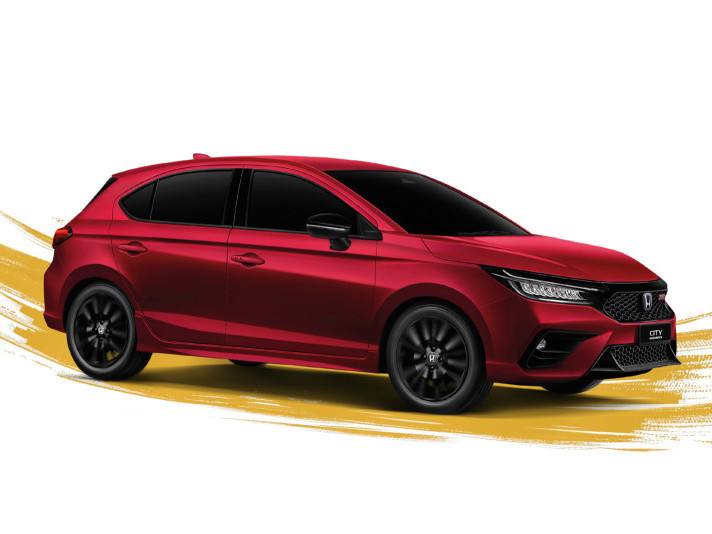
Honda City Hatchback Interior: Surprising Space Inside a Compact Body
WilliamJul 16, 2025
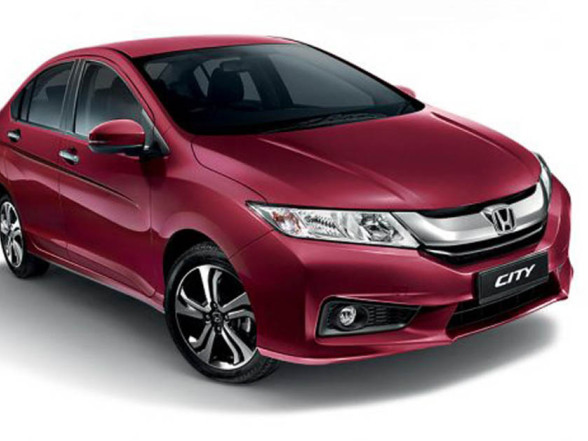
Should You Buy a Used Honda City GM6? – Get Idea Here!
RobertJun 23, 2025
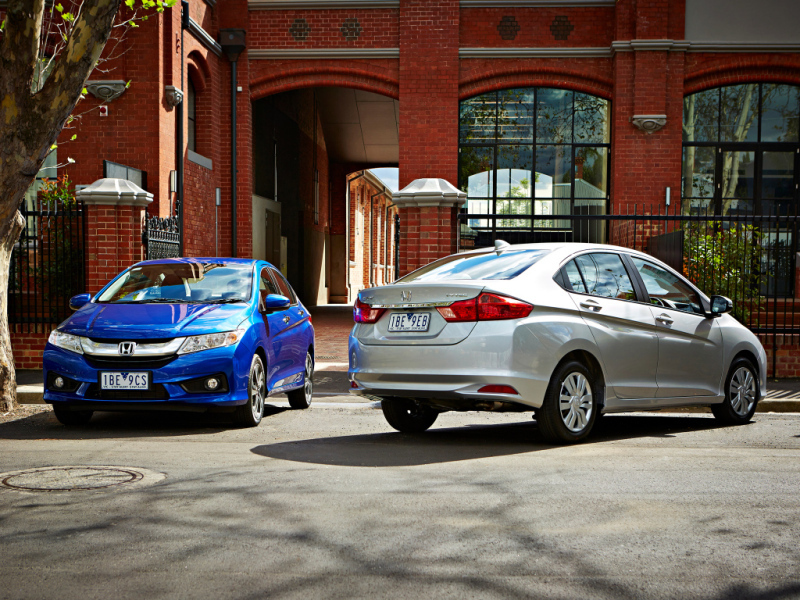
Is it worth buying a used Honda City GM7?
LienMar 7, 2025
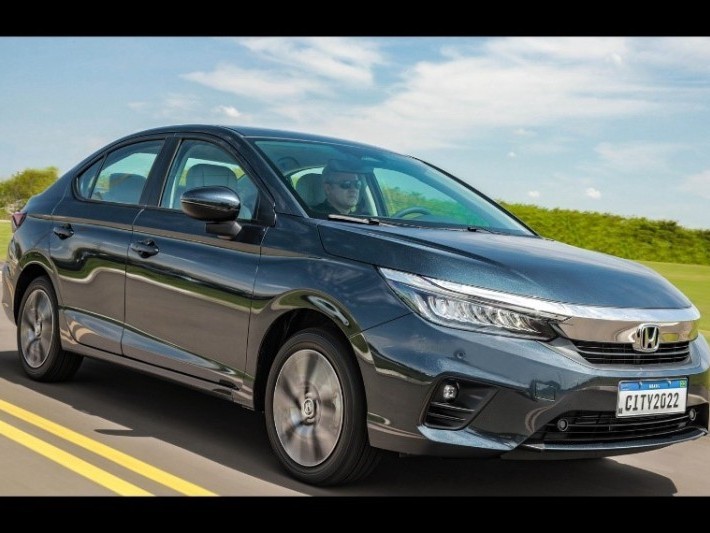
Limited to 99 units! Honda City SE Special Edition goes on sale, accused of clearing inventory?
LienSep 27, 2024
View More












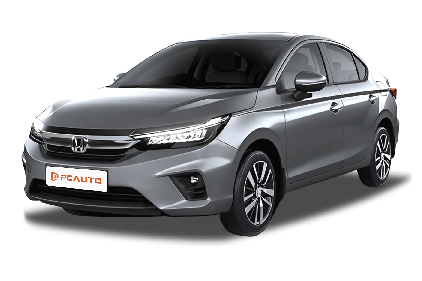
 Cars
Cars



Pros
Cons